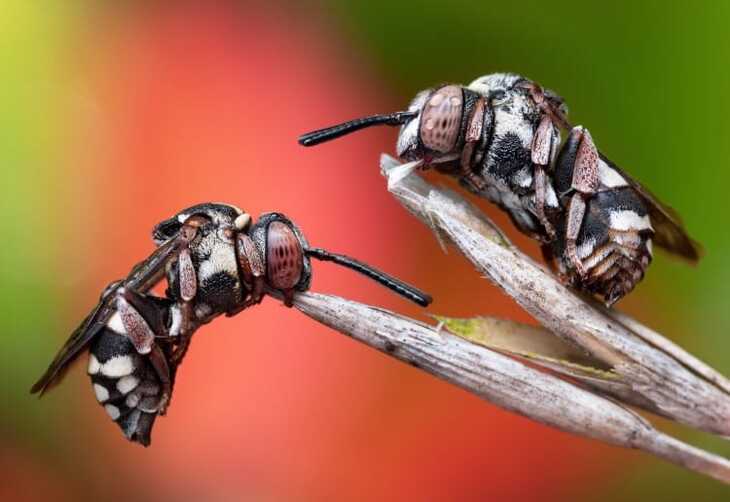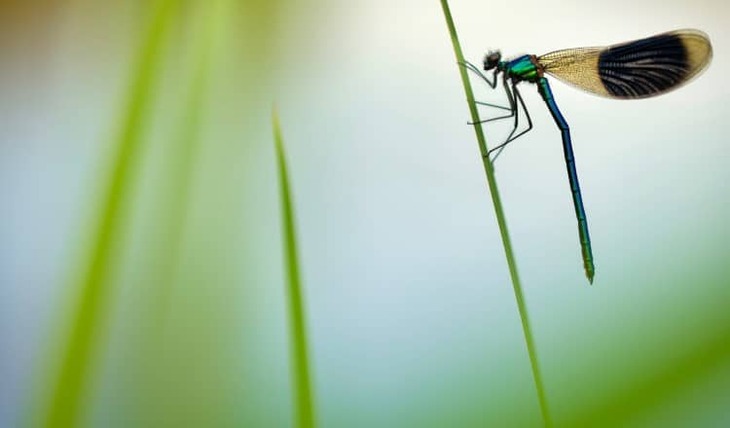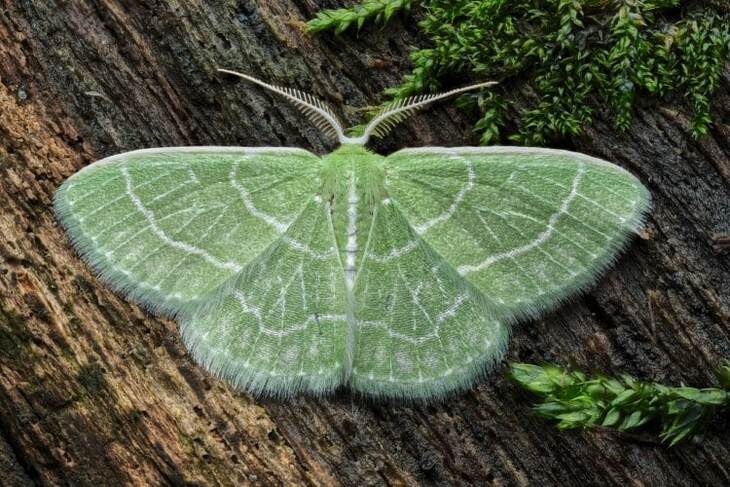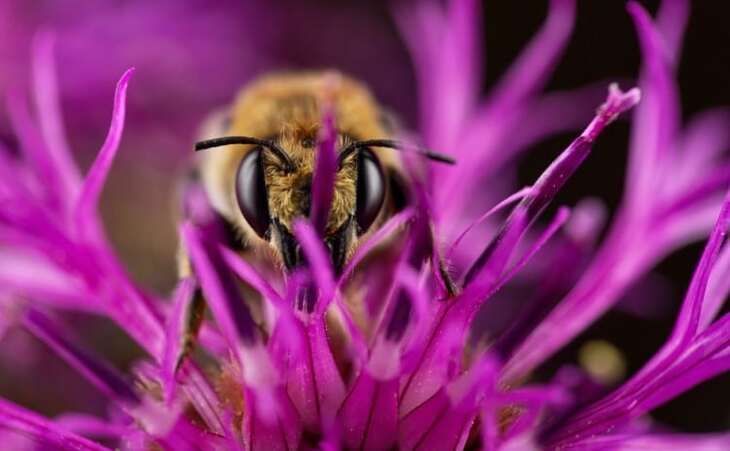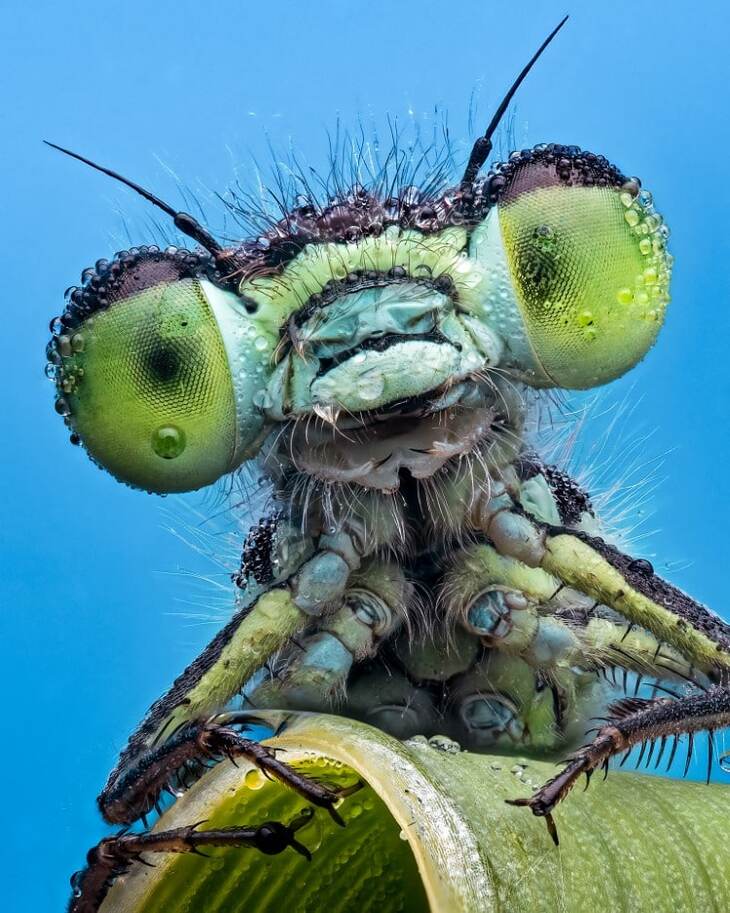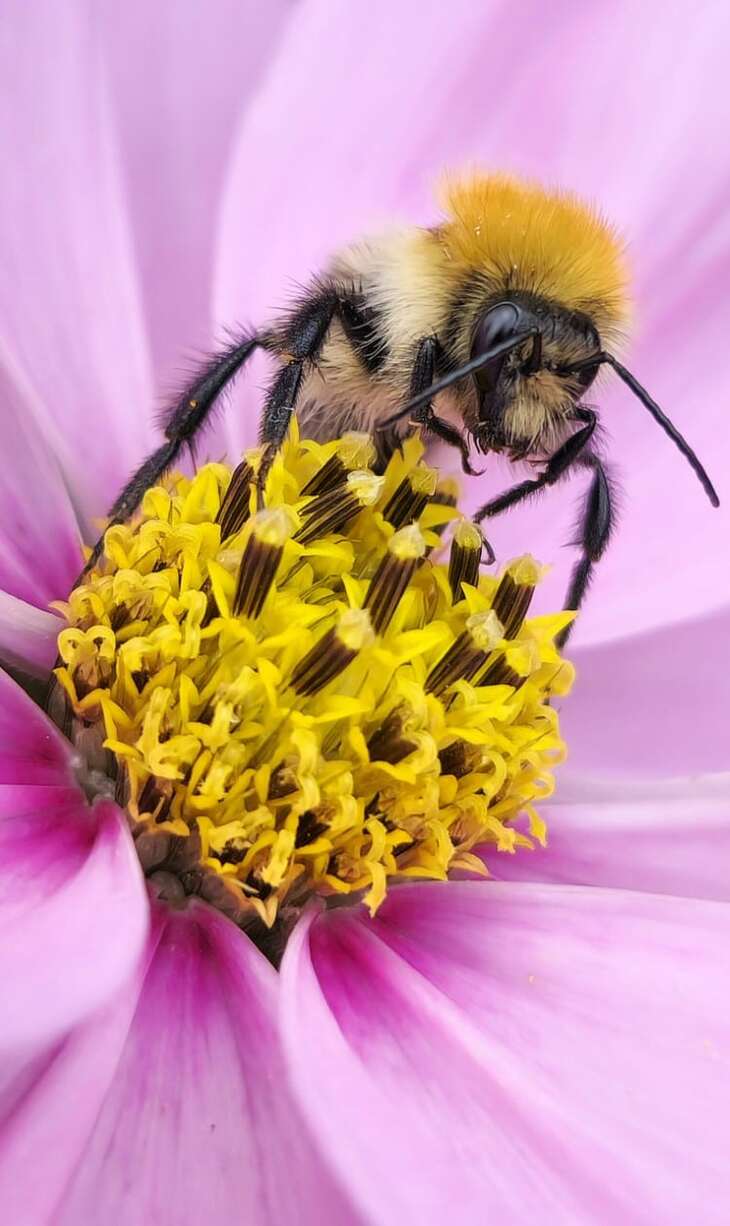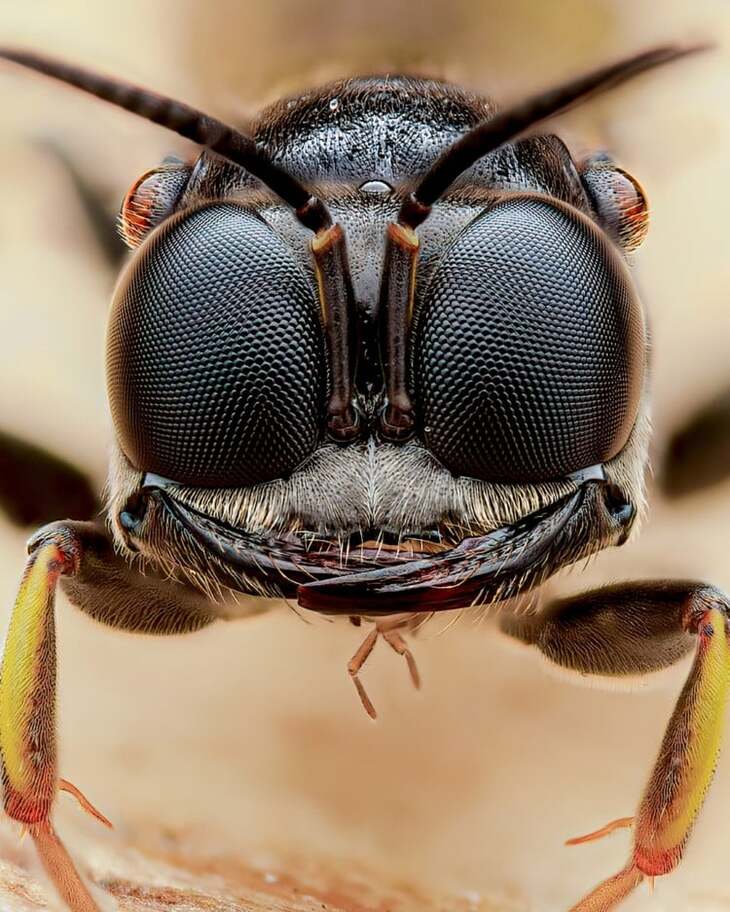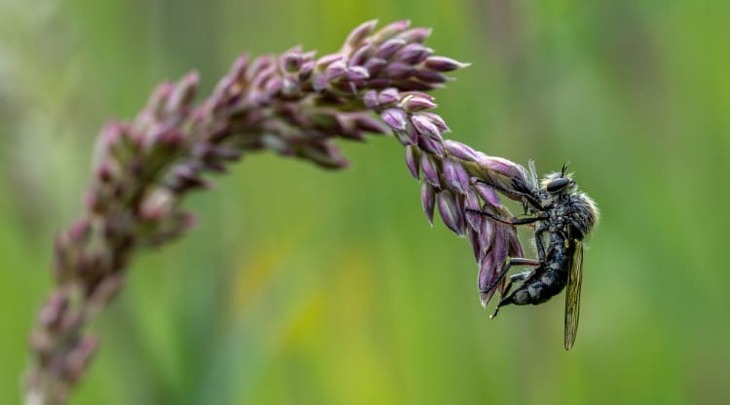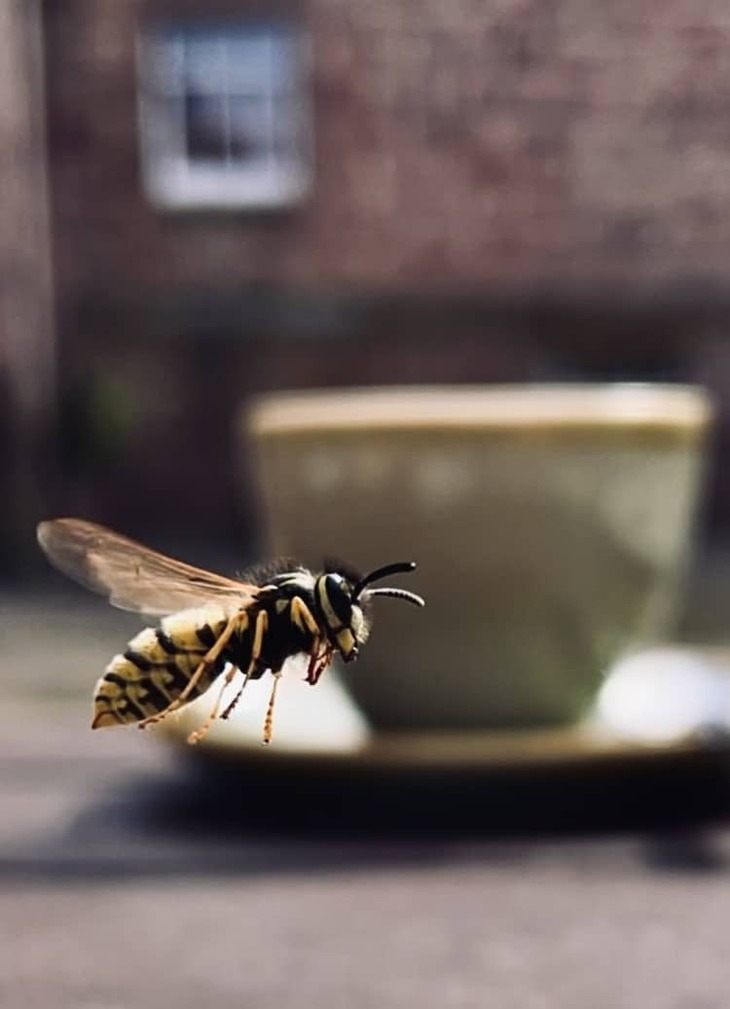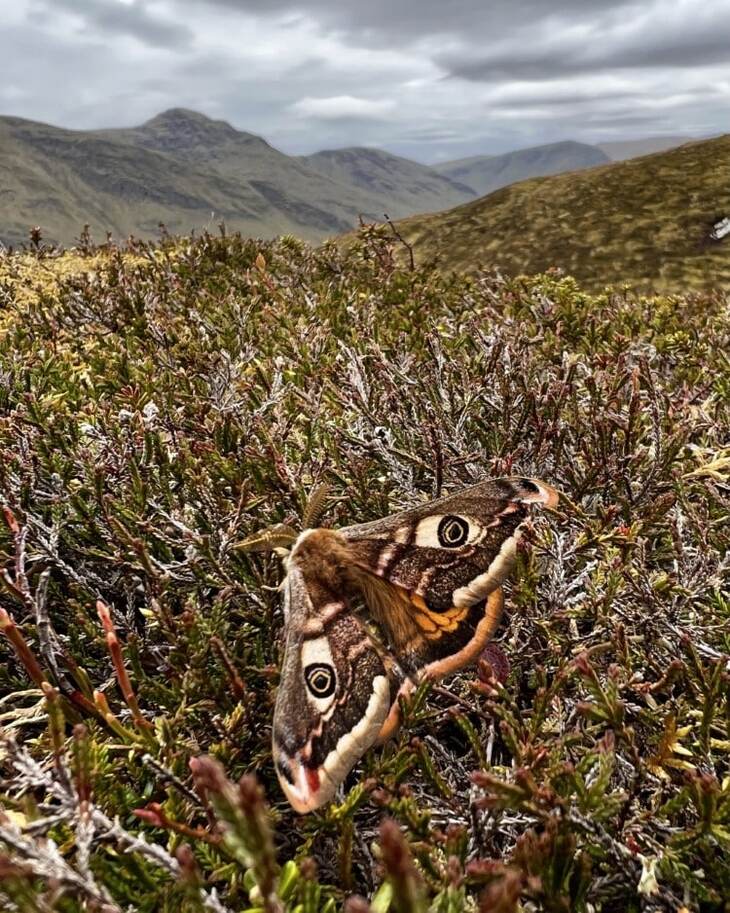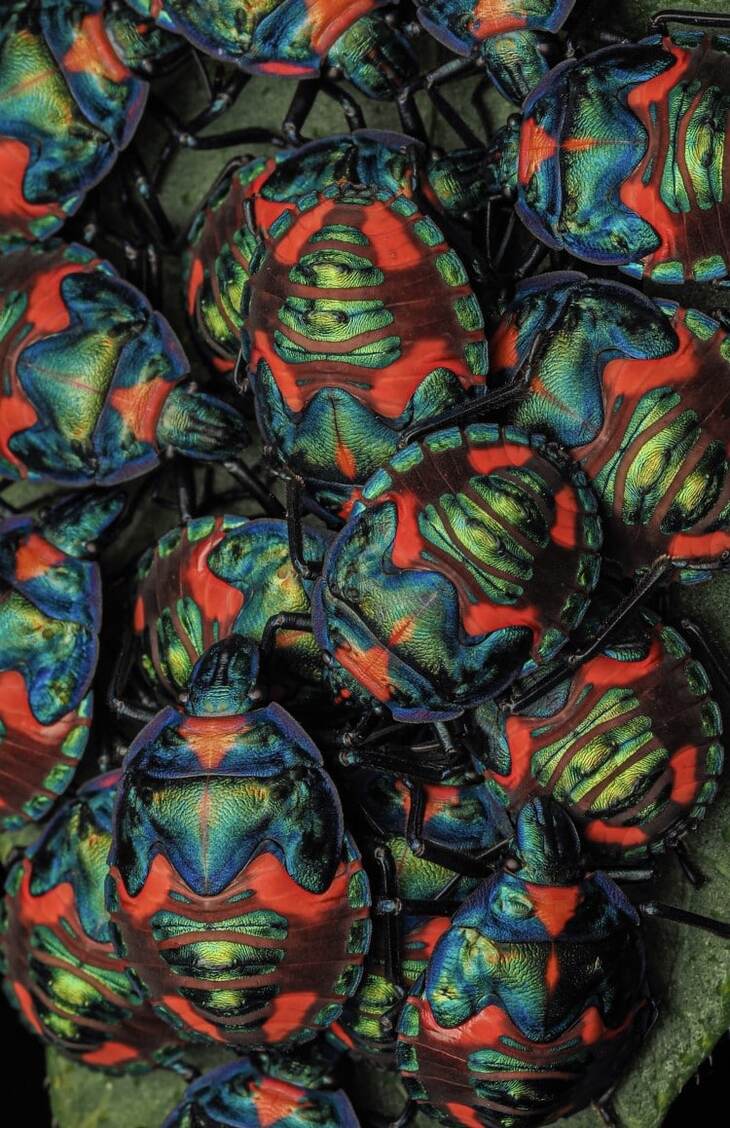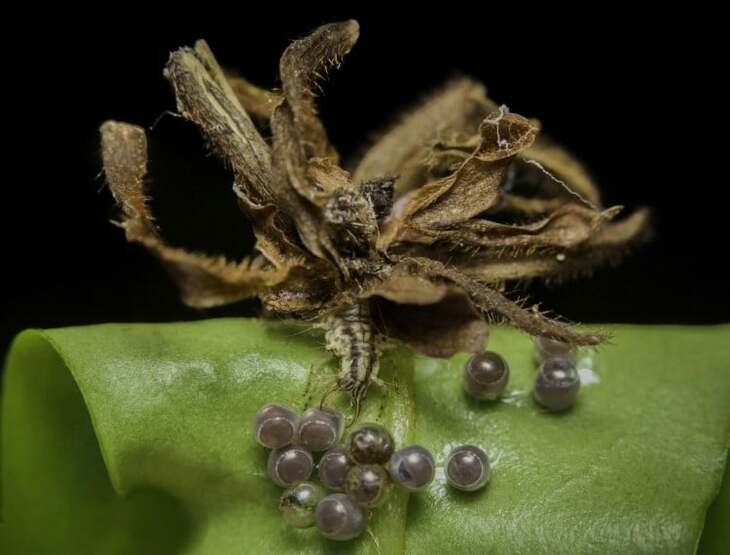Species: Black-thighed Cellophane-cuckoo bees, Epeolus variegatus
A pair of Epeolus variegatus cuckoo bees rest on blades of grass, their jaws clamped down for stability.
2. “Tranquility” by Gustav Parenmark (Sweden). First Place, Under 18.
Species: Banded Demoiselle damselfly, Calopteryx splendens, male
A gorgeous banded demoiselle perched gracefully on a riverbank near Gävle, Sweden.
3. “A forest gem” by Alexander McKerracher (Canada). Environment Specially Commended.
Species: Wavy-lined Emerald Moth, Synchlora aerata, male
A wavy-lined emerald moth rests gracefully on a mossy log, showcasing its vibrant colors.
4. “Purple Fire” by Gustav Parenmark (Sweden). Under 18 Specially Commended.
Species: Leafcutter bee, Megachile lagopoda
Södra Hällarna, a nature reserve on Sweden's western coast, is a haven for diverse wildlife. Among its inhabitants is the impressively built Megachile lagopoda bee, often found resting on greater knapweed.
5. “Look into my eyes” by Pete Burford (UK). Portraits Specially Commended
Species: Damselfly
A damselfly completely covered in dew during the stillness of night. As cold-blooded creatures, insects become immobile in cooler temperatures, making them susceptible to condensation. In this instance, the damselfly is entirely coated in moisture.
6. “Pollinator” by Michael Wood (UK). Over 18 Smartphone Specially Commended.
Species: Common carder bumble bee, Bombus pascuorum
A bumble bee going about its business.
7. “Gold digger” by Paul Fraser (UK). Portraits Specially Commended.
Species: Digger Wasp, Crabonidae
A close-up photograph of a digger wasp excavating chambers in a raised garden bed.
8. “Robber fly breakfast” by Jamie Smart (UK). Second Place, Under 18.
Species: Slender-footed robber fly, Leptarththrus brevirostris
A fly on a blade of grass, consuming another fly.
9. “Crimson-speckled moth perching” by Abdullah Shehabuddeen (Saudi Arabia). Under 18 Smartphone Specially
Species: Crimson Speckled moth, Utetheisa pulchella
A striking white moth, speckled with bold hues of red, orange, and black, rests gracefully on delicate white blossoms.
10. “A wasp joined us for a cream tea” by Abi Batten (UK). Smartphone Specially Commended.
Species: German wasp, Vespula germanica
This wasp displayed a preference for raspberry jam over blackcurrant while sharing a cream tea.
11. “Moths and mountains” by Marian Coburn (UK). Over 18 Smartphone Specially Commended.
Species: Emperor moth, Saturnia pavonia, male
A male Emperor moth rests on heather amidst the dramatic backdrop of the Scottish Highlands.
12. “Natures jewels” by Nikita Richardson (Australia). Behavior Specially Commended.
Species: Cotton harlequin bugs, Tectocoris diophthalmus, final-instar nymphs.
A cluster of male harlequin bugs.
13. “Earwig” by Zhang Yimeng (China). Under 18 Smartphone Specially Commended.
Species: Earwig, Eudohrnia metallica
A serene Yunnan evening offered a surprising encounter: an earwig, perfectly still on a leaf.
14. “Junk bug” by Rosa Dunbar (Australia). Behavior Specially Commended.
Species: Lacewing larva, Chrysopa sp.
The junk bug has developed a unique defense mechanism. To protect itself from predators, it accumulates plant debris and the exoskeletons of its victims on its back, creating a formidable disguise. This unusual camouflage effectively deters predators, allowing the bug to survive in its environment.

